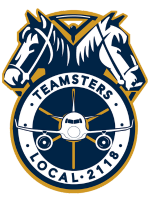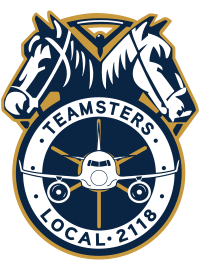Negotiating Committee – April 25, 2025
| Reorganizing for Strength! |
 |
| Fellow Pilots:
Bargaining Updates The parties participated in a virtual mediation session on Thursday, April 24, 2025. During this session, the Company finally made a counterproposal to our January 15th, 2025 Section 15 – Scheduling and PBS LOA proposal. Let it be clear: the parties remain at an impasse. The Union’s decision to request a proffer of arbitration remains unchanged. In fact, the Company’s proposal only strengthens our resolve to seek a release from mediation. A proffer for arbitration is a required precursor to a 30-day cooling off period and any legal right to engage in self-help. Management’s proposals made it clear that they have no intention of reaching a voluntary agreement for a fair contract with its pilots. They expect you and your Union to capitulate to their concessionary demands when it comes to your seniority, schedule and quality of life. That will not happen. First and foremost, management’s re-packaged 70 percent unstacking proposal doesn’t move the needle. The company continues to reject the Union’s reasonable, data-driven, and industry-supported 30/50 percent unstacking proposal. That is why we remain at impasse. The unworkable, interim or bridge PBS they are now proposing is a classic “look over here, not there” proposal designed to distract attention from an attack on the seniority rights of 70 percent or more of the pilot group. After years of avoiding any material commitment to progress, management suddenly has a surface-level interest in “collaborating” on a faster path to a commercial PBS. The Union’s unstacking proposal is fair, properly tested, based on empirical evidence, and accommodate the “unique” aspects of the Company’s operation without completely destroying the privileges and rights of your earned seniority. We have grieved, arbitrated, mediated, and litigated this very issue for the last 10 years. It ends now. The Company now says it disagrees with the Union’s testing. In reality, they are angry that we proved our proposals actually work for pilots and the operation. Management created PBS testing parameters that were absurd and statistically improbable, anticipating that the Union’s inability to solve them would support their position. Despite operating with 20–40% fewer pilots per aircraft than peer carriers, Allegiant set an artificially extreme bar for the Union’s “successful” PBS tests. Some components of their statistically improbable (and designed to be unsolvable) worst case setup are:
The result is then compared to CBI baseline metrics—despite being based on worst-case, not standard, assumptions. The test was clearly rigged for failure so they could justify their positions. Despite this, the Union successfully solved these absurd problems per management’s request, including in bases the company claimed were “problem bases” or “chronically understaffed,” management would then reject the testing results claiming the very same bases were now “overstaffed,” or “not a problem,” or some other reason to invalidate the results. When asked to provide their results for the same problems, they could not. Curiously, management has now changed their story to claim that their “testing” (which the Union has never seen) produces different results. The surface bargaining and shifting narratives continues with their new “implementation timeline.” Suddenly, management’s original timeline of “up to 36 months” for implementation has been whittled down to just “within months of ratification.” But don’t forget – this is all predicated on the membership capitulating to the company’s 70 percent unstacking rule. Management appears happy to accelerate progress to an industry-standard commercial PBS system, so long as the pilots are willing to give up the Bloch award, accept concessions in PBS, and trade away their seniority protections just to get there. No! From management’s update:
Management continues to insist that they alone have a monopoly on “the truth.” Their managers, with a documented history of spreading misinformation and outright lies, will now use their less-than-elementary understanding of NAVBLUE and commercial PBS systems to explain to you how unstacking works—because clearly your Negotiating Committee and/or a cursory Google search is insufficient. The industry agrees how it works. The vendor agrees how it works. The only people that don’t agree are Allegiant managers. Perhaps they will enlighten us and the entire industry with their “truth” presentation. But while they are wasting their time, ours, and yours on presentations, keep in mind they refuse to agree to industry standard unstacking rules to protect your seniority, and no “presentation” will change that fact. If our previous unstacking updates were “inaccurate and misleading,” in just a few sentences management could have:
And when it comes to their overall lack of credibility, they could have:
As is standard at Allegiant, management is silent and unresponsive when faced with empirical data and facts. Unsurprisingly, management now needs extra time over “the coming weeks” to engineer the “truth” they need to show you—because only management knows the truth. Don’t waste your time reading it. Follow this link to learn “the truth” directly from the software vendor. Pay particular attention to the Processing Logic section for a deeper dive on how PBS really works. From management’s update:
The emails and texts we received suggest that our pilots have already seen right through this. Surface bargaining disguised as “collaboration” and progress, while somehow putting the operational liability for staffing on its pilots. First, in the company’s proposals the Union would have absolutely no control over any of the key variables that affect unstacking – no control on staffing, scheduled trips, trip mix, open time, etc. The company would have complete discretion to change the variables at will—such as reducing headcount or manipulating trip construction—which would make solving unstacking impossible. Even still, management suggests that they would accept a solution below 50% unstacking—if only the Union could make it work. That’s the equivalent of management giving you a car with four flat tires, no spare, no roadside assistance, and no phone—and then saying, “If you can still make it to work on time, we agree not to discipline you.” It’s a recipe for decades more of the same: endless grievances, arbitration and lawsuits while the Company mows down our seniority rights and quality of life. From management’s update:
After our proffer request, management has suddenly found “respect for the mediation process.” The company’s history of leaking confidential bargaining information, sending out cut-rate mailers to your spouse, spreading misinformation, disparaging the Union in recurrent ground school, spreading false rumors about the Negotiating Committee, and a host of other activities is well documented and will be shared with the NMB when the opportunity is presented. The parties remain at an impasse. Management’s April 24, 2025 proposal has done nothing but reinforce that reality. Any messaging from the Company suggesting that progress was made, that they have moved in our direction, or have “given the Union everything they are asking for” is false. They have not. We remain committed to reaching a fair agreement that reflects the realities of our operation and the value you bring to this airline every day. The Sky [Isn’t] Falling Management continues to paint a dire economic picture to lower your bargaining expectations. Unsurprisingly, the data tells a different story. Allegiant saw a 14.4% growth in passengers in March alone, with an increase in revenue passenger miles (RPMs) of almost 16% as compared to the same period last year. Available seat miles (ASMs) grew much more aggressively, up more than 20%. Management seems to conveniently “forget” its statements, on public record, about its own operation. Consider the following quote from Allegiant’s CEO Greg Anderson:
Management cannot have it both ways: proclaim growth and resiliency to Wall Street while complaining to pilots that they are “too poor” and need scheduling concessions to pay below market wages. Allegiant is not in “survival” mode. Our pilots deserve and will obtain a contract that reflects the reality of your contributions to this carrier. Your expectations should continue to reflect that. Passenger Productivity What really drives value? Passengers. “Allegiant” isn’t paid by the Block Hour – they’re paid for safely moving people. The question isn’t whether the aircraft flies on Tuesdays—it’s how much work our pilots do for every customer moved. Based on the most current DOT information, Allegiant pilots safely transport the highest number of passengers per pilot of any airline in the industry – over 14,400 per pilot in 2023. Each pilot is responsible for 50.1% more passengers per year than jetBlue, 16.9% more than Spirit, 13.1% more than Southwest, 66% more than United, 115% more than Sun Country, and 51% more than Delta. Aircraft may be sitting, but the pilots are not. You fly the most passengers per pilot – with less support, less schedule choice, less protections, and less pay than your peers. You are not underutilized, you’re underpaid – with the worst work rules across the industry. Enough is enough. Financial Productivity Empirical data can tell us more about our pilots’ contributions to the financial success of this airline. Between 2017-2023, Allegiant ranks #1 in average operating income per pilot – ahead of every ULCC, Delta, and United, and #2 in net income per pilot, second only to Southwest. You drive industry-leading financial performance for this carrier – money which was promptly spent on failing resorts, golf courses, family fun centers, and the like. Allegiant pilots are high value, not low cost, yet management continues to refuse to invest in its own pilots. Consider management’s own words if there remain any doubt:
Whether the aircraft “sits on Tuesdays” or not is completely irrelevant to your work and contributions to this airline. Allegiant pilots produce significantly more for their airline than any of their peers – all within the confines of a bare bones operation with limited support when things go wrong. The Allegiant pilots schedule and quality of life are objectively worse compared to our peers thanks to no trip rigs, virtually no schedule construction rules, thinner staffing, less reserves as compared to our peers, and limited opportunities for schedule adjustment. Ask our central Florida based pilots how much this so-called low utilization model improves their schedule quality—or how much it reduces the time they spend crisscrossing the state in Larry’s Limo to rescue a purposely understaffed operation. Ask any seasoned Allegiant Captain to describe their misadventures with outstation maintenance. The real Allegiant “difference” is that Allegiant pilots do more with less. Management’s mistake is believing that our pilots should expect less—we do not. In Closing The Union remains resolute in its decision; no further progress will be made nor will any fair agreement result from mediation without the economic pressure of a 30-day cooling off period and threat of strike. Allegiant’s games have run their course. We will not settle for a substandard agreement at this juncture.
Captain Joshua Allen Captain Jay Killen Captain Brad Keller Captain J.R. Lynch Captain Jim Cole
|
 |
|
Copyright (C) 2025 Allegiant Pilots Association, Teamsters Local Union 2118. All rights reserved. You are receiving this email as a member of APA Teamsters Local 2118. |
